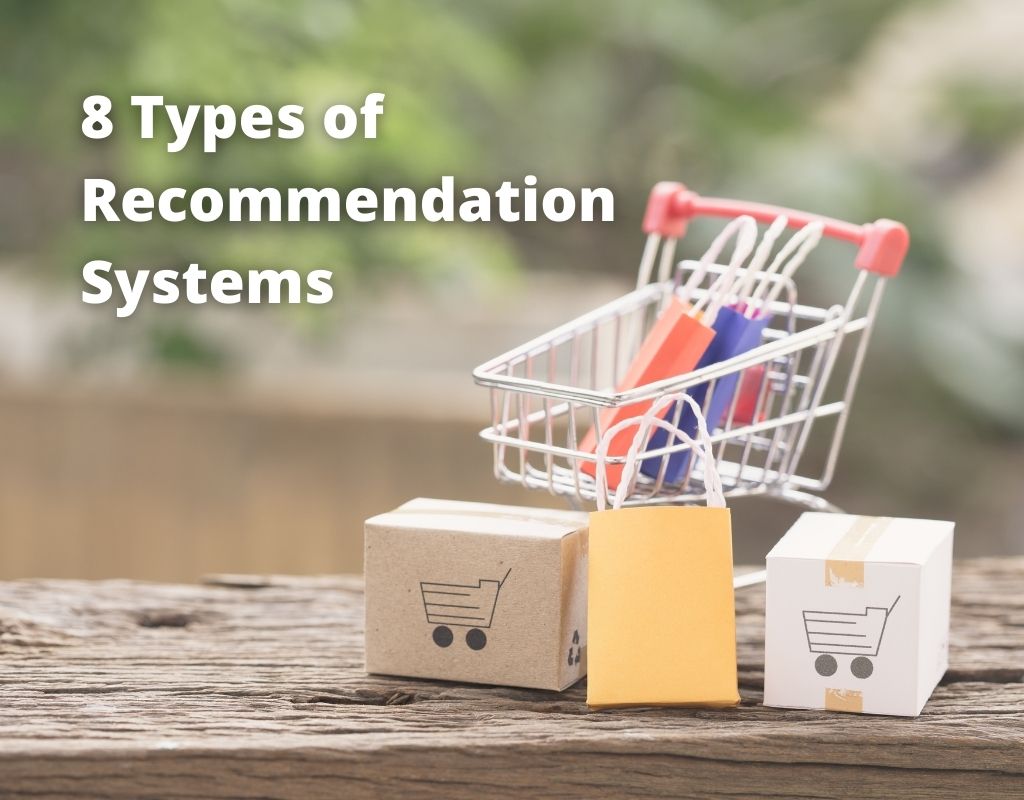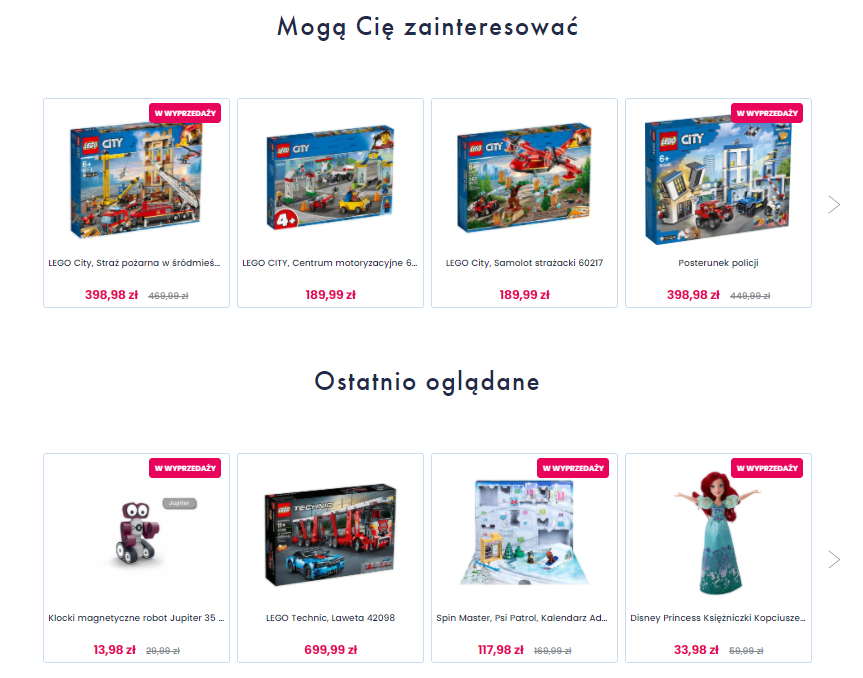Types Of Recommendation Systems - How Do They Differ?

The product recommendation engine is an easy-to-install external tool for personalizing purchases, which effectively increases conversion in the online store. When deciding to implement this solution, it is worth keeping in mind that there are several types of recommendations that, depending on the traffic in the store and the product range, may bring different benefits and give different results.
Several recommendation models on a product page increase the chance that they will be clicked by the user. Each type of recommendation is adjusted to different needs and preferences, so today on the blog we will take a closer look at each model that can be used in your store.
Why do we need more than one recommendation model?
The product recommendation engine receives information about:
- product specifications,
- session histories,
- clicks,
- the most viewed products,
- the most frequently purchased products,
- most often added to the cart.
This data feeds the algorithm which, thanks to machine learning technology, is able to generate various sets of purchase recommendations. Recommendations may be located in many places on the website
The most popular and profitable are the product page and the category page. A location worth considering is also a recommendation pop-up that appears when a product is added to the shopping basket as well as a recommendation banner on the basket page.
Types of purchase recommendations.
8 basic models in Recostream
1. AI-Driven Maximized Conversion
It displays recommendations with the highest potential for conversion for a given product and customer. This model is automatically optimized based on actual traffic and customer behavior. It uses statistical methods and machine learning and thanks to the so-called sampling selects unique recommendations.
Strengths of this model: the model returns uniquely tailored and optimized recommendations with high conversion probability, the model learns itself and adapts to the changing traffic in the store.
Weaknesses of this model: the model can be launched only after collecting the first data range, other models are ready to return recommendations faster.
2. Most Viewed in Category
It displays the most often viewed products belonging to the same category that the product on which we display this recommendation belongs to.
For example, if the most displayed item in the "Children's Books" category is "Moominvalley", a user who watches other children's books will receive a recommendation for that book because it is the most popular in that category.
The algorithm generates recommendations based on information about the history of users' sessions.
Strengths of this model: displaying this recommendation model makes it easier for the user to navigate through the store, thanks to which there is no need to visit each subpage one by one in search of a product.
Weaknesses of this model: from starting the engine to making the right recommendations, a given amount of time needs to pass before as many people as possible view a said item. In other words - the target recommendations will not appear immediately, but after the appropriate number of clicks.
3. Bestsellers in Category
It displays the most frequently added products to the shopping basket belonging to the same category as the product on which we display this recommendation.
This model is similar to the above model, except that it shows the products that have been purchased, not just viewed. This solution is used in the recommendation engine of, for example, Amazon.
The algorithm generates recommendations based on information about the history of users' sessions and their purchases.
Strengths of this model: products presented in the store as the bestsellers of a given category are most often bought by new store users as they feel safer buying something that sells best in the store. This option allows the customer to build on the purchasing experience of other users.
4. Bestsellers in Store
It displays the products that are most frequently added to the shopping basket among all the products in the store. Recommendations are selected automatically by an algorithm that in real-time collects information on which product is currently most often added to the basket in the entire store. Bestsellers will be great on the home page and on the product category page.
Strengths of this model: information about the best-selling products is one of the most common and effective forms of social proof, in particular for customers who do not have a clear idea of what to buy.
For the store administrator, information about the most popular product may be useful while creating, for example, a newsletter or a sponsored advertisement on Facebook Ads.
5. Most Similar in Category
It displays products similar to the product on which we display this recommendation. Similarity is determined by comparing descriptions, names, and other characteristics of products with the use of special algorithms. In the case of this model, it is vital that the product description is as precise as possible and contains the most important keywords. The more detailed the product description, the more relevant recommendations will be able to be generated. A properly prepared product description also has a positive effect on the visibility of the website in the browser.
Strengths of this model: high accuracy of recommendations. This is one of the most effective options for personalizing purchases - the engine generates recommendations in real time right after installation, thus avoiding the "cold start" problem. Moreover, it is a simple application of an up-selling method that increases sales.
Weaknesses of this model: with an inaccurate description of the product characteristics, the engine may indicate recommendations that are not necessarily similar to the product being viewed.
6. Recently Visited in Store
This recommendation is only shown to users who have previously visited the store. The products they viewed during one of their previous visits are presented. The set of recommendations is generated based on the session history of a given user with an assigned ID number.
Strengths of this model: this type of recommendation has a positive effect on building trust among visitors to an online store. It happens relatively often that customers of online stores do not make purchasing decisions immediately, but postpone it until later to make a more thoughtful purchase.
When, during the next visit to the e-store, the user is shown a product that they saw in the previous session and which they may have already forgotten, they will most likely click on it again, which will, in turn, increase the sales opportunity.

7. Others Also Viewed in Store
It displays products that other users have viewed in a single session with the product on which we are displaying this recommendation. This model is based on the statistical analysis of the product browsing history in the store.
Strengths of this model: The model shows the products that other customers with a similar history have viewed in the store, which increases the likelihood of a purchase.
Weaknesses of this model: Running the model requires collecting a basic dataset of store traffic.
8. Rule-Driven Recommendations
It shows the products selected by the store owner. The person administering the online store has the option to indicate which products will be displayed at a given moment and in a given place on the store's website. Such a solution is particularly often used during special promotions and when a given product is to sell faster.
Strengths of this model: the model allows you to directly define which products will be recommended for a given product or set of products that meet the selected categories. This allows you to use the knowledge and experience of the store owner.
Weaknesses of this model: this model can effectively act as cross-sellers recommendations, while usually other models achieve higher conversion. This model is also difficult and time-consuming to implement when it comes to the entire assortment of products.
Summary
The product recommendation system is a multi-layered solution that enhances many important elements of the user purchasing experience. Thanks to the continuous generation of product recommendations, users can expect easier navigation through the product catalog, which will prevent them from overlooking an interesting proposal.
In this article, we discussed 8 advanced recommendation types that, when properly used, can increase conversion by up to 10% during the first month of use. At Recostream, we believe that the quality and accuracy of recommendations is the key to success.